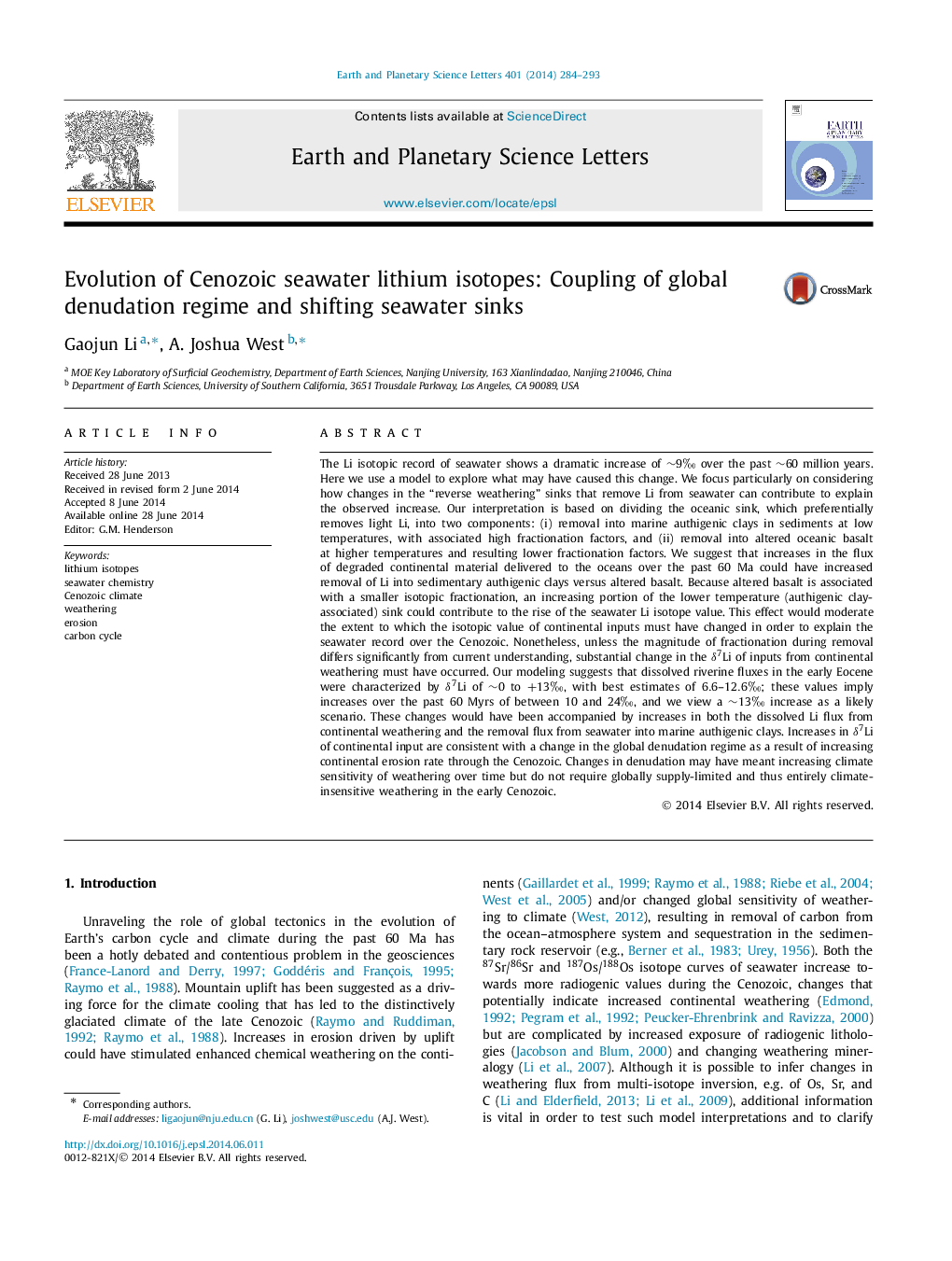| کد مقاله | کد نشریه | سال انتشار | مقاله انگلیسی | نسخه تمام متن |
|---|---|---|---|---|
| 6429211 | 1634755 | 2014 | 10 صفحه PDF | دانلود رایگان |
- Li isotope evolution of Cenozoic seawater is modeled.
- More removal of Li into marine clays vs. altered basalt changes net fractionation during removal.
- Cenozoic seawater δLi7 requires change in isotopic composition of continental input.
- Seawater δLi7 is consistent with global changes in continental denudation system.
The Li isotopic record of seawater shows a dramatic increase of â¼9â° over the past â¼60 million years. Here we use a model to explore what may have caused this change. We focus particularly on considering how changes in the “reverse weathering” sinks that remove Li from seawater can contribute to explain the observed increase. Our interpretation is based on dividing the oceanic sink, which preferentially removes light Li, into two components: (i) removal into marine authigenic clays in sediments at low temperatures, with associated high fractionation factors, and (ii) removal into altered oceanic basalt at higher temperatures and resulting lower fractionation factors. We suggest that increases in the flux of degraded continental material delivered to the oceans over the past 60 Ma could have increased removal of Li into sedimentary authigenic clays versus altered basalt. Because altered basalt is associated with a smaller isotopic fractionation, an increasing portion of the lower temperature (authigenic clay-associated) sink could contribute to the rise of the seawater Li isotope value. This effect would moderate the extent to which the isotopic value of continental inputs must have changed in order to explain the seawater record over the Cenozoic. Nonetheless, unless the magnitude of fractionation during removal differs significantly from current understanding, substantial change in the δLi7 of inputs from continental weathering must have occurred. Our modeling suggests that dissolved riverine fluxes in the early Eocene were characterized by δLi7 of â¼0 to +13â°, with best estimates of 6.6-12.6â°; these values imply increases over the past 60 Myrs of between 10 and 24â°, and we view a â¼13â° increase as a likely scenario. These changes would have been accompanied by increases in both the dissolved Li flux from continental weathering and the removal flux from seawater into marine authigenic clays. Increases in δLi7 of continental input are consistent with a change in the global denudation regime as a result of increasing continental erosion rate through the Cenozoic. Changes in denudation may have meant increasing climate sensitivity of weathering over time but do not require globally supply-limited and thus entirely climate-insensitive weathering in the early Cenozoic.
Journal: Earth and Planetary Science Letters - Volume 401, 1 September 2014, Pages 284-293
